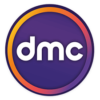
RPA
Is becoming the cornerstone of software automation. It enables business to relieve their employees from mundane repetitive tasks by assigning them to software robots that mimic the exact steps that humans do faster and more accurate than humans. RPA technology requires no changes to the IT infrastructure within businesses and can interact with all the systems via user interface (like humans) or via API/Webservices when available.

RPA can interact with mainframe, web, desktop, Java based and Citrix/remote desktop applications. It acts as the last mile of automation as it enables systems that were previously not possible to connect to each other (technically not possible, too expensive or for security reasons) to now communicate together with RPA acting as both an integrator and validation of data being exchanged between the systems.
Our team is here to help you beat your Go-To-Market time and smash the competition by fast, reliable and scalable tools and methodologies, suitable for your needs. Using Frontend, Backend, Mobile, Web, Cloud and Devops latest technology trends we wrap your end-to-end automation solution for the best experience and ROI.
your lines of business
No matter the size of your business or a given team, automation eliminates headaches and empowers your people.
Main Features
Finance teams are always running against deadlines set by regulators. The more time you spend on payroll, billing, and journal entries, the less time you have to spend on strategic financial planning objectives. Automate your repetitive, rules-based tasks and data entry for a happier and more efficient team.
Month-end reporting
At the end of every month, you can automatically log into your platforms, generate reports, export data to spreadsheets, and even validate the data for accurate and compliant reporting.
Payroll
From employee timesheets and approvals to calculating holiday pay and scheduling the bank draft, the number of steps involved with payroll may seem endless. From now on, let the robots handle it.
Expense reporting
Automate the process of logging expenses, attaching corresponding receipts to each expense entry, and checking the expense and receipt logs to verify that no mistake has been made.
Accounts payable
Instead of logging invoices by hand, you can automate the process of extracting relevant data from emails, log in to vendor applications, retrieve invoice information, and enter data into your own accounting software.
Whether they contact you by phone, email, or chat, managing communication with your customers is critical to giving them a positive experience. The more efficient your team is in routing communications and replying to customers, the happier you will make them.
Update CRM
Businesses rely on CRMs to maintain an accurate database of customer information and communication. Automatically update your CRM with relevant data, from call logs to e-commerce orders and everything in between.
Email routing
From parsing emails to ticket creation and record attachments, automate the triaging and routing of your incoming emails. Your team will get to the emails faster and offer more targeted responses.
Call center management
Pull customer information into a single place and do the required manipulation (if any) for the call center staff, giving them only one view with all the required details.
Support tickets
From processing newly incoming tickets to triggering alerts and communication to customers, using automation in support tickets saves your staff time and enhances the customer experience.
Employee information is used in a variety of ways across countless platforms. Rather than copying and pasting or repeatedly typing the same information, let robots handle it for you.
Talent acquisition
When a candidate applies to a role in your ATS, automation can send the data where it needs to go. Used rules-based triggers to alert staff, communicate with the applicant, or send start an onboarding workflow when a candidate becomes an employee.
Employee onboarding
From insurance providers, HR systems, Payroll, ERP, expense reporting systems, and more, there are. Automation reduces the time it takes for key onboarding activities by more than 80% while increasing the accuracy of data entry.
Employee data management
HR departments are constantly inundated with data on current and past employees, contractors, and interns—often across various office locations and company branches. Use automation to manage this data and keep the data updated across systems.
Benefits administration
When an employee has a change of address, adds a spouse or dependant, or has another life event, your HR team can automate the process of updating their benefit data. Not to mention how much easier that enrollment can be for new employees.
Manage massive amounts of data with the help of software robots. Rather than your IT staff manually uploading and downloading reports and transferring data manually, let automation connect your data systems.
Connecting mainframes
Even today, mainframes power many important businesses and are a central part of infrastructure in companies. These systems are central to many processes, but their legacy nature can make them difficult to manage.
Master data administration
Organizations are dealing with more data than they ever have. Automating data transfers between systems can connect legacy systems and make transferring data between platforms seamless and secure.
Data backups & restorations
These processes can be fully automated by providing employees with the required credentials, as well as source and destination details for the whole data backup or restoration
Open Source RPA
- Fewer business-case restrictions: With no upfront costs and comparatively lower support costs, you can justify going after more automation use cases.
- Innovation possibilities: With open-source, you have access to the codebase. You are free to combine with other open-source tools or even build on top of these tools for your specific needs.
- No lock-in risk: Proprietary RPA could increase your risk of being locked into the vendor and/or their technology. While rare, you could end up at the mercy of their price increases and lack of flexibility.
- Open-source though is becoming the norm in many large enterprises. Generally, as the technology matures, we see more compelling open-source options that could even overtake the mainstream technologies (eg. Android, Linux, etc.). This could very well be the future of RPA!
So, it makes sense to keep abreast of what is happening in this space.



























Security for any App, any Platform, any Cloud
Google Cloud Platform
The placeholder text, beginning with the line “Lorem ipsum dolor sit amet, consectetur adipiscing elit”, looks like Latin because in its youth, centuries ago, it was Latin
Docker
The placeholder text, beginning with the line “Lorem ipsum dolor sit amet, consectetur adipiscing elit”, looks like Latin because in its youth, centuries ago, it was Latin
Kubernetes
The placeholder text, beginning with the line “Lorem ipsum dolor sit amet, consectetur adipiscing elit”, looks like Latin because in its youth, centuries ago, it was Latin
Red Hat OpenShift
The placeholder text, beginning with the line “Lorem ipsum dolor sit amet, consectetur adipiscing elit”, looks like Latin because in its youth, centuries ago, it was Latin
Amazon Web Services
The placeholder text, beginning with the line “Lorem ipsum dolor sit amet, consectetur adipiscing elit”, looks like Latin because in its youth, centuries ago, it was Latin
Microsoft Azure
The placeholder text, beginning with the line “Lorem ipsum dolor sit amet, consectetur adipiscing elit”, looks like Latin because in its youth, centuries ago, it was Latin
Mesosphere
The placeholder text, beginning with the line “Lorem ipsum dolor sit amet, consectetur adipiscing elit”, looks like Latin because in its youth, centuries ago, it was Latin







